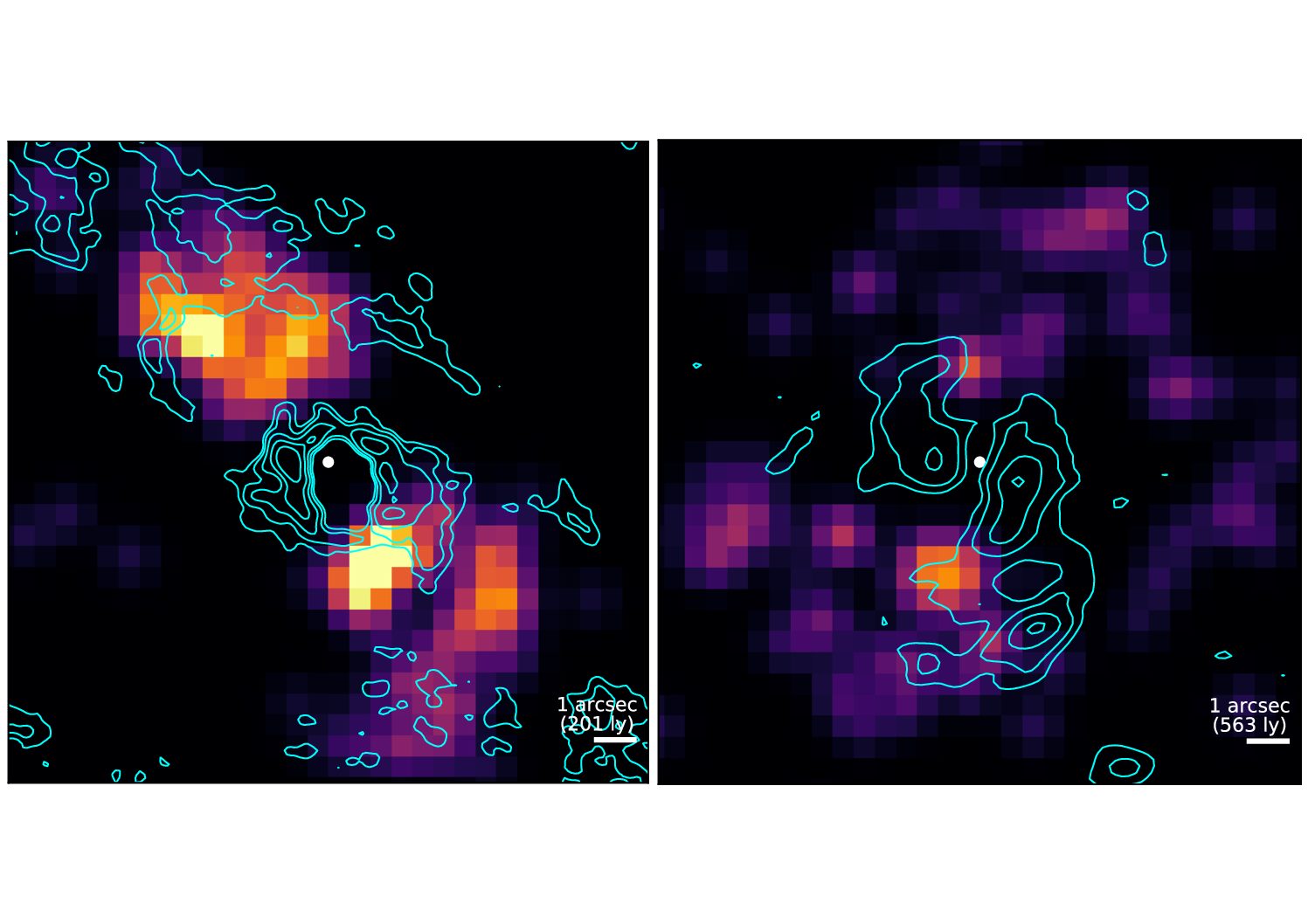P R E S S R E L E A S E
European Astronomical Society (EAS)
——————————————————————————
1 July 2021
Powerful X-ray emission from supermassive black holes could destroy the cradles of star formation
Most massive galaxies, fundamental structures composed of over 10 billion stars, host supermassive black holes (SMBHs) at their centers, which can produce very strong emission from the radio to the X and gamma rays. Such SMBHs are called active galactic nuclei (AGNs). Now, a team of astronomers, led by Taiki Kawamuro (Universidad Diego Portales, Santiago, Chile), found that particularly the high-energy X-ray emission of AGNs may impact the interstellar gas in their galaxies, suppressing the birth of new stars. This result provides a new insight into the impact of the SMBH on the growth of the galaxy, one of the most debated topics in extragalactic astronomy. The result was presented at the virtual annual meeting of the European Astronomical Society (EAS), hosted by Leiden University, Netherlands.
AGNs can release a larger amount of energy, sufficient to impact the evolution of their host galaxies. Accordingly, researchers have proposed various ways how the energy couples with the interstellar gas and dust, and it has been proposed that the powerful X-ray radiation of AGN could play an important role. As well-known from the medical X‐ray imaging, X-ray emission has a high penetrating power, and its effect is expected to be far-reaching, by piercing through the galaxy. In addition, theoretical works suggested that X-ray emission can heat and destroy cold molecular gas, which is the main fuel of the star formation process.

The above facts have motivated the team to study the link between AGN X-ray irradiation and cold molecular gas. Although such studies were hampered mainly owing to the lack of high spatial resolution observations for cold molecular gas, the advent of the Atacama Large Millimeter/sub-millimeter Array (ALMA) in 2011 has enabled such observations. At higher energies, the Chandra X-ray observatory, launched in 1999, can provide the best maps in the X-ray band.
To understand the link between X-ray radiation and molecular gas, Kawamuro et al. carefully analyzed ALMA and Chandra data for 26 nearby AGN. They first compared the distributions of X-ray-irradiated gas and cold molecular gas, revealed by Chandra and ALMA respectively, and noticed that the X-ray irradiated gas does not spatially coincide with the cold molecular gas on scales of thousand light years. This result suggests that the gas irradiated by X-ray emission does not contain a large number of cold molecules. In other words, the X-ray radiation could alter the property of molecular gas, therefore affecting the cradles of star formation.
Furthermore, they found the trend that the molecular gas around X-ray brighter AGNs is more rarefied. Such a trend has been indeed predicted by theoretical works, according to which the evaporation of gas by harsh X-ray radiation may reduce its density. As denser gas can collapse and produce stars more efficiently, the result may suggest that the interstellar gas around an X-ray brighter AGN is not preferred for forming stars.
Although our study was limited to nearby AGNs, in the future it would be possible to observe distant objects after the advent of next-generation X-ray telescopes, such as AXIS and Lynx. Such observations will provide intriguing opportunities to study the X-ray impact of the AGN in the distant Universe where galaxies grew more significantly.
——————————————————————————
More information
Contact
Taiki Kawamuro, Universidad Diego Portales, Santiago, Chile
E-mail: taiki.kawa15@gmail.com
Paper
Kawamuro et al., Hard X-ray Irradiation Potentially Drives Negative AGN Feedback by Altering Molecular Gas Properties. Submitted to ApJS.
Image
Spatial distributions of cold molecular gas (cyan contours) and X-ray-irradiated gas (color image), traced by ALMA and Chandra observations of molecular-gas and X-ray emission lines, respectively, in AGN host galaxies of NGC 1068 (left) and NGC 2110 (right). The central white circles indicate the AGN positions. Lengths corresponding 1 arcsec are indicated in units of light years (ly) in the bottom-right corners. Original figures are in Kawamuro et al. (submitted to ApJS). These figure show that the X-ray irradiated gas does not spatially coincide with the cold molecular gas, consistent with the fact that the X-ray irradiation affects the cold molecular gas. Credit: Taiki Kawamuro/UDP
About the EAS
The European Astronomical Society (EAS) promotes and advances astronomy in Europe. As an independent body, the EAS is able to act on matters that need to be handled at a European level on behalf of the European astronomical community. In its endeavours the EAS collaborates with affiliated national astronomical societies and also with pan-European research organisations and networks. Founded in 1990, the EAS is a society of individual members. All astronomers may join the society, irrespective of their field of research, or their country of work or origin. In addition, corporations, publishers and non-profit organisations can become organizational members of the EAS. The EAS, together with one of its affiliated societies, organises the annual EAS meeting to enhance its links with national communities, to broaden connections between individual members and to promote European networks.
Follow #EASLeiden2021 on Twitter and Facebook——————————————————————————
